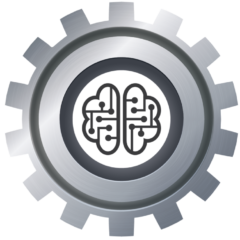The problem description is an essential element of project planning, as it helps project managers to clearly define the problem that the project aims to solve. A clear and accurate problem description ensures that all stakeholders have a shared understanding of the project’s objectives and can work together to develop effective solutions.
Recently, my role has changed to Project Manager within Corporate FSI (Foreign Systems Interfaces) team at Universal Health Services. While I have been technically managing implementation, and new builds for our Acute facilities involving Physician Billing for the last two-three years, it’s nice to pursue this course, officially.
What is a Problem Description?
A problem description is a clear and concise statement that outlines the problem that the project aims to solve. It provides a detailed explanation of the problem, including its causes, effects, and impact on stakeholders. A problem description should be specific, measurable, and focused on the needs of the target audience.
Why is a Problem Description Important in Project Planning?
A problem description is important in project planning for several reasons:
- Provides clarity: A clear problem description ensures that all stakeholders have a shared understanding of the problem that the project aims to solve. It provides clarity and helps to avoid misunderstandings or confusion.
- Focuses on the right problem: A problem description helps to ensure that the project focuses on the right problem. It helps to avoid wasting resources on addressing a problem that is not relevant or important.
- Sets objectives: A problem description sets the objectives for the project. It provides a clear goal that the project aims to achieve, which helps to ensure that all efforts are focused on achieving that goal.
- Identifies stakeholders: A problem description helps to identify the stakeholders who are affected by the problem. This helps project managers to ensure that all stakeholders are involved in the project and that their needs are considered.
- Develops solutions: A problem description helps to develop effective solutions to the problem. It provides a clear understanding of the problem, which helps to develop solutions that are tailored to the needs of the target audience.
Steps to Develop a Problem Description
To develop a problem description, project managers should follow these steps:
- Identify the problem: The first step is to identify the problem that the project aims to solve. Project managers should gather information about the problem, including its causes, effects, and impact on stakeholders.
- Define the problem: The second step is to define the problem. Project managers should clearly state the problem in a way that is specific, measurable, and focused on the needs of the target audience.
- Gather data: The third step is to gather data to support the problem description. Project managers should collect data from various sources, including stakeholders, research reports, and surveys.
- Analyze data: The fourth step is to analyze the data to identify trends and patterns. Project managers should look for patterns that may indicate the causes or effects of the problem.
- Refine the problem description: The final step is to refine the problem description based on the data analysis. Project managers should ensure that the problem description accurately reflects the problem and provides a clear understanding of its causes, effects, and impact on stakeholders.
In Summary
A problem description is an essential element of project planning, as it helps project managers to clearly define the problem that the project aims to solve. A clear and accurate problem description ensures that all stakeholders have a shared understanding of the project’s objectives and can work together to develop effective solutions. To develop a problem description, project managers should identify the problem, define the problem, gather data, analyze data, and refine the problem description based on the data analysis.
#infobymattcole
 You can check out Matt’s LinkedIn account, Youtube Channel, or Podcast.
You can check out Matt’s LinkedIn account, Youtube Channel, or Podcast.Introducing my new books, ‘The Art of Critical Thinking’ and ‘The Critical Thinking Model’. Both can be read for free with Kindle Unlimited or $2.99 each via Kindle.
1 thought on “Problem Description”
Comments are closed.